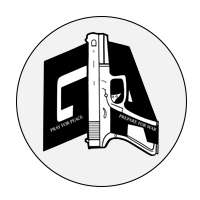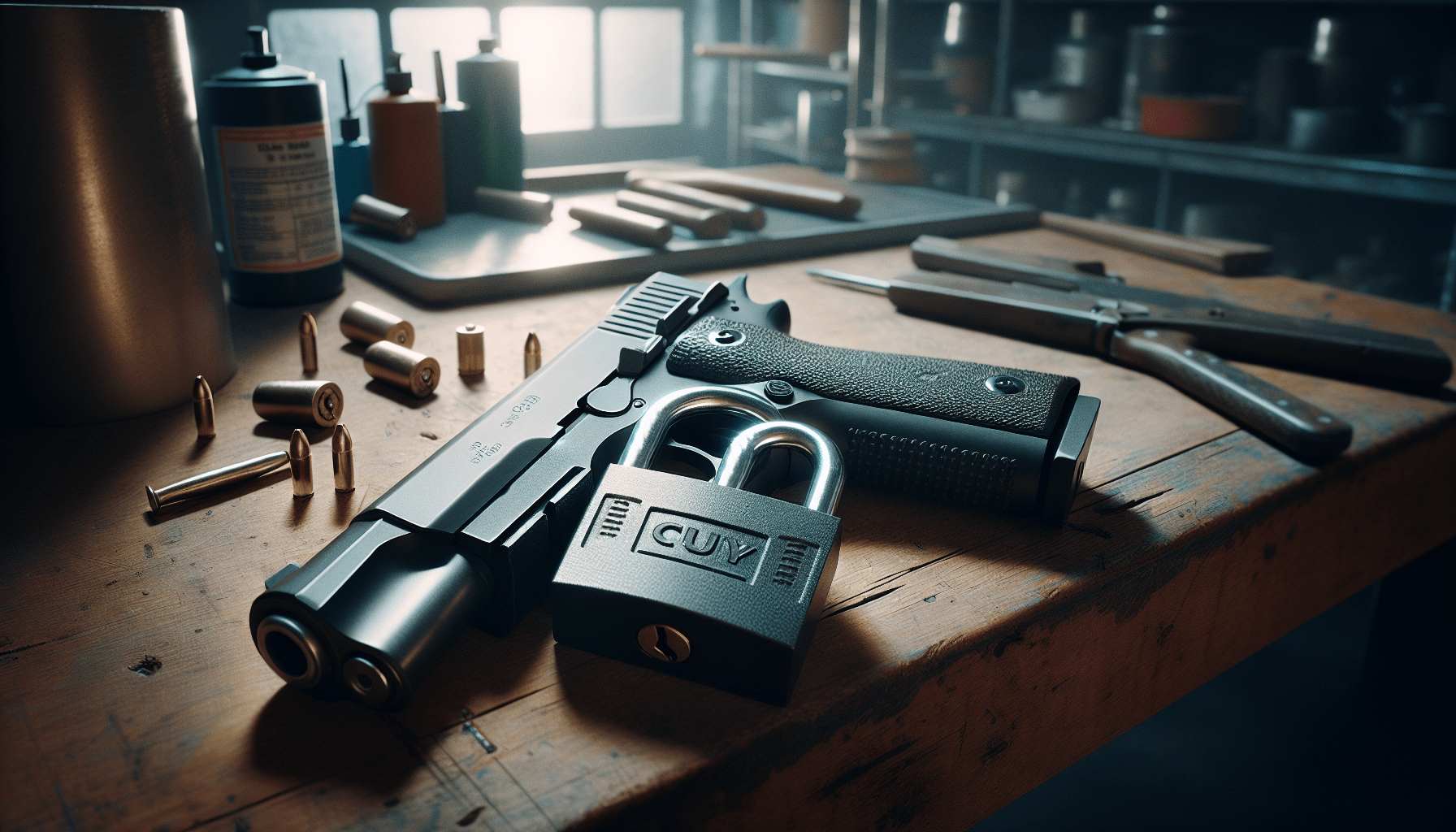Have you ever considered the implications of introducing firearms to children? Whether you’re a parent considering this for the first time or just curious about the matter, the topic of children and firearms is not to be taken lightly. The goal here is to ensure safety, instill responsibility, and promote awareness. Let’s embark on a detailed discussion about safe handling practices for kids with firearms.
Safe Handling Practices for Kids with Firearms
When it comes to firearms, ensuring that kids have the proper knowledge and respect for these powerful tools is paramount. It’s not just about locking them away but also about educating young minds to handle them responsibly.

The Importance of Early Education
Starting early doesn’t mean handing over a firearm to a toddler. It means creating an environment where respect for firearms is established from a young age. This helps in demystifying the object, making kids less curious and thereby reducing the chances of accidents.
Respect, Not Fear
It’s crucial to instill respect for firearms without generating unnecessary fear. Explain the purpose of guns—a tool for protection, sport, or hunting—and emphasize that they should never be used irresponsibly or without adult supervision.
Visual and Verbal Education
Begin with visual and verbal education. Show them pictures and videos that convey the powerful impact of firearms. Discussions should focus on the serious nature of gun use, its dangers, and the responsibilities that come with handling one.
Proper Handling Techniques
When kids are old enough and mature enough to learn about handling firearms, it’s essential to teach them the proper techniques. This section covers the basics every child should know.
Basic Handling Rules
- Always Treat the Gun as Loaded: This fundamental rule cannot be overstated. The assumption that a gun is always loaded prevents careless handling.
- Finger Off the Trigger: Until they are ready to shoot, their finger should never touch the trigger.
- Point in a Safe Direction: The muzzle should always be pointed in a safe direction, away from people and pets.
Using Training Tools
Consider starting with non-lethal training tools like airsoft guns or BB guns to build familiarity with handling and safety rules. This can be an effective way to apply theoretical knowledge without the risks associated with real firearms.
Safe Storage Solutions
An integral part of firearm safety for kids is ensuring that guns are stored safely. Here are some recommended practices:
Gun Safes and Locks
Invest in high-quality gun safes and locks. These not only keep firearms out of the reach of children but also add an extra layer of protection against unauthorized access.
| Storage Solution | Description |
|---|---|
| Biometric Safes | Uses fingerprints to open, ideal for quick access while keeping kids out. |
| Combination Locks | Requires a combination to open, perfect for those who may forget keys. |
| Cable Locks | Inexpensive and can be used to ensure a gun cannot be fired even if accessed. |
Concealed Storage
Concealed storage options, such as hidden compartments in furniture or wall safes, are also effective. The key is to ensure these are not easily discoverable by curious children.
Supervised Shooting Practices
If you’re taking the step to introduce your child to shooting, supervised practice is a must. This provides a controlled environment for them to learn how to handle firearms responsibly.
Choose the Right Environment
Opt for a reputable shooting range. Many ranges offer family-friendly environments and have certified instructors who specialize in teaching children.
Incremental Learning Stages
- Begin with Basics: Start by teaching them the basics of using a firearm and correct stance.
- Controlled Environment: Make use of a virtual shooting range, like the one at Green Line Arms, to provide a safe yet realistic environment for practice.
- Advance Gradually: Only progress to more advanced shooting techniques when your child is ready and comfortable.
Addressing Emotional and Psychological Preparedness
A critical yet often overlooked component of introducing kids to firearms is addressing their emotional and psychological readiness. Not every child is the same, and what works for one may not work for another.
Maturity Assessment
Assess your child’s maturity level. They should have a good understanding of consequences and exhibit responsible behavior in other areas of life before introducing them to firearms.
Open Communication
Maintain open lines of communication. Discuss any fears, misconceptions, or questions they may have about firearms. This not only reduces anxiety but promotes a healthy understanding of gun safety.
Legal Considerations
Every region has its own set of laws and regulations regarding the ownership and use of firearms by minors. Being well-versed in these laws is a key aspect of safe firearm handling.
Minimum Age Requirements
Various jurisdictions have different minimum age requirements for handling firearms. Ensure you are fully compliant with local laws.
Mandatory Safety Courses
Many regions mandate safety courses for minors before they can handle or shoot a firearm. Look for courses accredited by recognized bodies emphasizing responsibility and safety.
Community Resources
Utilizing community resources can make a significant impact. Organizations like Green Line Arms offer a variety of programs and courses designed to educate kids on firearm safety.
Green Line Arms
Green Line Arms, located in Pensacola, Florida, provides a wealth of resources from beginner to advanced firearms training. Their virtual shooting range offers a safe and controlled environment where kids can learn and practice under expert supervision.
For a hands-on approach, visit Green Line Arms at:
1350 South Blue Angel Pkwy
Pensacola, Florida 32506
Phone: 850-285-0468
Website: greenlinearms.com
Local Law Enforcement
Consider reaching out to local law enforcement agencies. Many offer community programs focused on firearm safety for families and minors.
First Responder Medical Tips
An additional layer of preparedness involves understanding basic first responder medical tips. Accidents can happen despite the best precautions, and knowing how to respond can make a vital difference.
Basic First Aid
Teach kids basic first aid skills:
- Stop the Bleeding: Apply pressure to wounds to limit blood loss.
- Stay Calm: Maintaining composure allows for more effective aid.
- Emergency Numbers: Ensure they know how and when to call emergency services.
Medical Kits
Invest in a good quality medical kit and ensure it is accessible. Knowing how to use items like tourniquets, bandages, and antiseptics can be crucial in the event of an accident.
Benefits of Responsible Training
Teaching kids about firearm safety and handling has multiple benefits, not just for safety but also for their personal development.
Enhanced Responsibility
Kids who are taught to handle firearms responsibly often exhibit higher levels of responsibility in other areas of their lives.
Increased Confidence
Successfully learning how to handle a firearm can boost a child’s confidence and sense of accomplishment.
Improved Focus
The discipline required in learning to handle firearms safely can help improve focus and concentration.
Key Takeaways
Safe handling practices for kids with firearms involve a combination of education, proper handling techniques, safe storage, supervised practice, emotional preparedness, legal awareness, and the utilization of community resources. When approached responsibly, educating kids about firearms can build a foundation of respect, responsibility, and safety that lasts a lifetime.
For a comprehensive learning experience, visit Green Line Arms where expert guidance and advanced facilities can help you and your family navigate the path to responsible firearms education.
Remember, responsible firearm ownership starts with education and ends with the safety of you and your loved ones.




